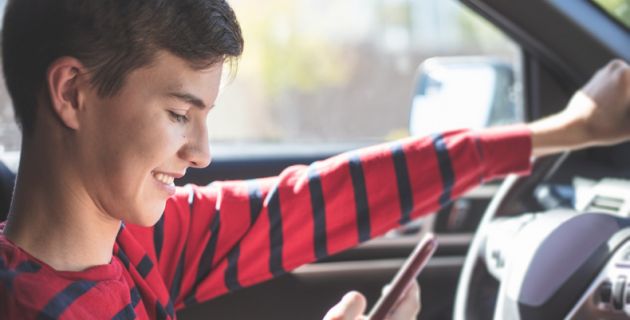In the late 2000s, the meteoric rise of text messaging coincided with a sharp increase in car accidents due, of course, to distracted driving. It has been reported that teen drivers under the age of 18 are involved in 900,000 car accidents every year, with a large proportion attributed to texting behind the wheel. As a result, policymakers and law enforcement have placed an emphasis on reducing the risks posed by texting while driving, with special attention focused on the teen population.
Unfortunately, after a decade of policy change and increased enforcement, it seems as though the scope of the issue remains unchanged.
Texting & Driving Statistics
Texting and driving affects everyone—not just teens. Texting while driving is reported to be one of the most dangerous cell phone activities for anyone. So, we’ll start by covering texting and driving statistics as they apply to all drivers in an effort to give you a general idea of how impactful this distraction already is.
- According to the National Safety Council, distraction caused by cell phone use while driving accounted for over 1.4 million accidents in 2013.
- In 2015 alone, 391,000 injuries resulted from accidents caused by distracted driving.
- Using a cell phone while driving, and most commonly texting, makes drivers between 2-9 times more likely to cause an accident.
- Surveys show that 94% of drivers support laws that ban texting while driving.
- They also find that, despite supporting bans on distracting phone-related activities, a large proportion of drivers still engage in such activities.
- According to the NHTSA, in the 5 seconds you take your eyes off the road to answer a text message going 55 miles an hour, your car will travel the length of a football field.
The risk of texting and driving is largely tied to the time and distance a driver’s eyes are diverted from the road. Even while traveling at reasonable speeds, a car will cross a significant distance in the time it takes to text a short reply.
Of notable concern is the fact that many adult drivers who acknowledge the dangers of texting while driving admit to doing it anyway. Not only does this present significant danger to themselves and others on the road, but it also sets a poor precedent for teenage drivers.
Teen Texting & Driving Statistics

New teen drivers today grew up with text messaging, and it’s become an integral part of their everyday life. This and the fact that teens are much less risk-averse than adults are a few contributors to the following teen texting and driving statistics.
- According to a poll conducted by the NHTSA, 94% of teen drivers acknowledge the risks of cell phone use while driving BUT 35% of teen drivers who acknowledge these risks admit to texting while driving anyway.
- Texting and driving is significantly more common in:
- Rural areas compared to urban areas.
- States where the minimum age for a learner’s permit is lower.
- 1 out of 10 accidents involving teen drivers are caused by cell phone distractions.
Sifting Through the Stats
So, what does it all mean? Here are some of our biggest takeaways:
- Texting while driving is extremely dangerous, as evidenced by the huge number of accidents caused by it every year.
- People acknowledge these dangers, but many choose not to change their behavior in order to minimize risk to themselves and others.
- Teen drivers are significantly more prone to driving distractions than adult drivers.
- In general, teens tend to engage through text message more than adults, particularly while driving.
- It is particularly troubling that teens tend to text and drive more along rural routes, which already experience accidents at a higher clip than other routes.
- The compound effect of multiple distractions (e.g. teenagers driving with passengers AND texting) puts teens at severe risk of being involved in harmful or fatal accidents.
Be Aware, Answer Texts Later
When rereading the statistics above, try to take into account the precariousness of the position you may put yourself in by engaging in these behaviors, and also the severity of the consequences. You would never drive blindfolded, so why would you text and drive?
By taking the time to reach your destination before texting back, you help ensure that you, your loved ones, and the many folks around you make it home safe and unharmed.